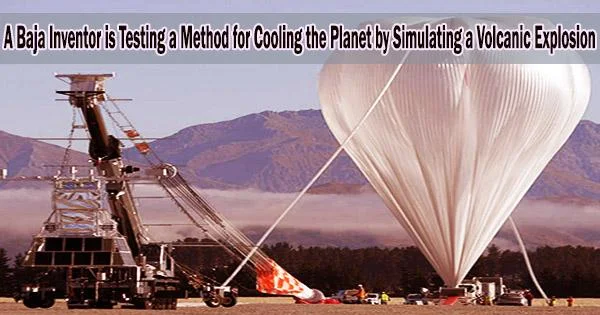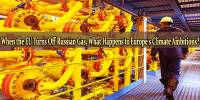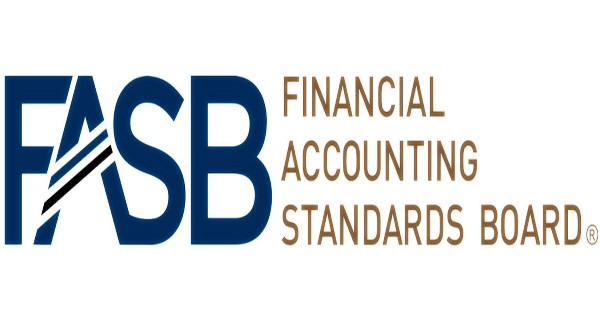Luke Iseman spoke with specialists in the industry while he was considering starting a solar geoengineering business. His best piece of advise was to avoid using the word “geoengineering.”
The phrase refers to modifying Earth’s climate for human benefit, but in recent years it has also come to stand in for “solar geoengineering,” which is the release of chemicals into the atmosphere in an effort to deflect sunlight away from the planet and lessen its warming effects. Because it hasn’t been thoroughly investigated, it is debatable because we don’t know if the unexpected consequences will be better or worse than the effects of climate change.
Iseman’s startup Make Sunsets, which has raised at least half a million dollars in venture capital, mostly skates around the hot-button word on its website.
“We make reflective, high-altitude, biodegradable clouds that cool the planet. Mimicking natural processes, our ‘shiny clouds’ are going to prevent catastrophic global warming,” reads the site’s About page. On the FAQ page, Make Sunsets calls what it is doing “albedo enhancement,” a scientific term for reflecting sunlight.
But Iseman confronted it head-on in an interview.
“I’m very opposed to geoengineering. I want no geoengineering to occur,” Iseman told CNBC. “Unfortunately, I was born into a world with a poorly geoengineered atmosphere where I, and everyone before me for the last couple hundred years, were emitting huge quantities of carbon dioxide to build the modern world. So I want to do as little geoengineering as necessary to fix that.”
Whatever you call it, we know the cooling part works. According to the U.S. Geological Survey, thousands of tons of sulfur dioxide were released into the stratosphere during the Mount Pinatubo eruption in the Philippines in 1991, momentarily decreasing average global temperatures by around 1 degree Fahrenheit.
Most people have dismissed the idea of simulating similar circumstances to combat climate change as more science fiction than actual science. The White House is currently organizing a five-year research plan to explore the subject, and as the effects of climate change have become more severe and visible, it has received more serious attention.
The negative effects of sulfur dioxide emissions into the atmosphere include the potential for ozone layer destruction, respiratory disease, and acid rain. It would also cost as little as $10 billion per year to run a program that cools the Earth by 1 degree Celsius, UCLA environmental law professor Edward Parson told CNBC in 2022. That’s remarkably cheap compared to other mitigation techniques.
So which of these two scenarios is less bad? Most scientists who study the problem aren’t sure, but they think it’s important to begin studying the ramifications.
Iseman doesn’t want to wait for those studies. There isn’t time, he says.
“There is not really anything that I’ve been able to find, other than albedo enhancement, that even has a chance of keeping us below more than two degrees Celsius of climate change. And that’s a that’s a pretty terrifying world to imagine,” Iseman told CNBC. “Basically, long answer short, I’m doing this because it needs to be done. And no one else is.”
Launching balloons in Baja and selling ‘cooling credits’
In January, Make Sunsets plans to launch three latex weather balloons that will release anywhere between 10 and 500 grams of sulfur dioxide. A flight tracking computer, a geolocating tracking device, and a camera mostly supplied by amateur suppliers will be included in the balloons. Make Sunsets will provide information about what it was able to find on its website within a week of each flight.
Iseman is an experienced doer. He has designed, invented, built and deployed biochar kilns in rural Kenya, a solar-powered wifi-connected garden sensor, and tiny homes made out of shipping containers, among other projects. For a year and a half, Iseman worked as the director of hardware at the leading Silicon Valley startup shop, Y Combinator.
He is currently living off the grid in Baja, Mexico, on land he bought a couple years ago, where he continues to tinker. He has a publicly viewable Google document with 40 ideas he wants to build or test, including a solar-assisted composting toilet with time and temperature monitoring, freediving safety gear and a floating solar panel.
Make Sunsets started as simply an idea to test solar geoengineering in a quick, cheap way.
Iseman says the academic consensus starts with spending $20 billion over 10 years to build a high-altitude plane, or to put mirrors high in space.
That wasn’t practical enough for him. “Here in reality, I was like, ‘OK, what can I buy, ideally, on my credit card, ideally on Amazon, to see if I can even do this?’ Maybe I’m missing something fundamental about how hard this is.”
Back in April, Iseman did his own rudimentary experiment with a 6-foot weather balloon, sulfur, a stainless steel kitchen pot with a lid, a pump that he took out of a water dispenser, and a tank of helium. (That experiment can been seen in the photo here.)
He gave himself until the end of 2022 to raise money to run more tests, or just publish a description of what he had done. Eventually, he got a bite for a half-million dollars, incorporated on Oct. 1, and brought on co-founder Andrew Song.
Make Sunsets is also selling what it calls “cooling credits,” starting at $10, which companies will be able to buy to offset the effects of their carbon emissions.
Iseman has been wary of the the idea of companies or individuals paying to remove carbon or mitigate global warming effects. “Initially, I was really skeptical entirely of the of the voluntary carbon credit market,” Iseman told CNBC. “I thought it was either really expensive for very legit things that in 50 to 200 years will save the world, hopefully. Or it was inexpensive things where you’re like trading the right to not cut down a future tree. Basically, most of the credits that I’ve found below $50 per ton feel very scammy.”
But Iseman believes future carbon markets will evolve to include two things that actually work: permanent carbon dioxide removal, which will be expensive, and sunlight reflection technology, which Iseman says will be incredibly inexpensive at scale. The primary cost of sunlight reflection technology efforts at scale is sulfur dioxide.
Apart from the unknown side effects, there’s another moral conundrum with solar geoengineering: If there’s a cheap and easy way to mitigate climate change, then there’s no incentive to do the hard work of eliminating carbon emissions.
“That’s a real concern philosophically and academically. However, back here in the real world, people are dying, right? Maybe 20 years ago should have had those discussions and had the time to think about that. And if we had a magical world government that could organize all of these things, then yeah, that would be great,” Iseman told CNBC. “If international law for that matter held meaningful teeth, or if we didn’t have a land war in Europe, then maybe we could have an adult conversation about this that’s not the reality that we live in, unfortunately.”
Brayton Williams, a co-founder of San Mateo-headquartered venture capital firm BoostVC, told CNBC the firm invested $500,000 in Make Sunsets because they were impressed with Iseman’s dedication, and because tackling climate change is the kind of big, complicated problem the firm likes to tackle.
“We have invested in companies working on banking the unbanked of Latin America, eradicating heart disease, abundant nuclear energy, one-hour global travel and many, many more,” Williams told CNBC. “These are moonshot opportunities, but if they work they really do make a huge positive impact on the world.”
Williams knows the investment is a bit of a risk, but cautions that the firm is still at a very early stage and the details could change along the way.
“I always encourage people to not judge an early stage two-person startup like you might a public entity,” Williams said. “If nothing else, I hope Make Sunsets helps encourage a bunch more founders to take action to really make a positive impact on our planet.”
Make Sunsets has also received venture capital funding from Pioneer Fund, which did not respond to requests for comment.
‘Crazy yes, but perhaps sign of the times?’
Janos Pasztor, executive director of the Carnegie Climate Governance Initiative, mostly disparaged the idea of Make Sunsets because there are no international governance standards for solar geoengineering yet.
But he’s not surprised someone’s trying it.
“This all sounds crazy. A for-profit company trying to make money by cooling the planet. Crazy, yes, but perhaps a sign of the times?” Pasztor told CNBC. “The climate crisis is getting worse by the day. The world is getting and will continue to get warmer. Governments are not taking their responsibilities seriously enough. And we live in a capitalist society where actors make money in many different ways, like it or not. So how surprising is this?”
UCLA’s Parson wasn’t particularly surprised either, as he wrote in a blog post for Legal Planet. “Those following debates on active climate interventions have been expecting and worrying about something like this for a few years.”
Unsurprising or not, experts in the field object to what they see as rogue and dangerous boundary pushing.
“It makes no sense as a business nor as a statement,” said Harvard professor David Keith, who has been working on the topic since the late 1980s.
The critical issue with solar geoengineering is trust and that trust must be earned carefully, Keith said on Twitter after the MIT Technology Review earlier wrote about Make Sunsets.
“There is no reasonable doubt that commercial-off-the-shelf tech could be adapted to cool the planet at a tiny cost using strat aerosols. Science suggests benefits could be far larger than risks,” Keith wrote. “But the research community is thin and distrust is widespread. Trust must be earned with a far broader, more inclusive research effort, one that makes systematic efforts to look for errors and uncertainty.”
Kelly Wanser, the executive director of SilverLining, an organization promoting research and governance of climate interventions, says that it’s impossible to measure the effects of solar geoengineering accurately enough to sell cooling credits.
“Currently, the effect of releasing quantities of particles into the atmosphere cannot be attributed or quantified, due to two major areas of uncertainty in related climate science: the effects of particles (aerosols) on clouds and climate, and uncertain side effects of specific approaches, for which any credits would have to be adjusted,” Wanser told CNBC. “No one who supports meaningful climate outcomes or healthy credit markets should engage with this now.”
Pasztor objects because the impacts of solar geoengineering are global, so he believes it’s inappropriate for a single entity to be moving forward without careful governance structures and buy-in from a wide group of stakeholders.
According to Parson, the balloon launches are not sufficiently defined to yield accurate research results. He also thinks a private corporation shouldn’t be responsible for adding sulfur dioxide to the atmosphere.
“There is plenty of incentive for self-interested actors, particularly those with revenues on the line, to misrepresent these. Nothing about this process, except perhaps specific aspects of implementation under some hypothetical future governmental or intergovernmental control, can be entrusted to private firms,” he wrote.
Iseman isn’t entirely comfortable with the idea of solar geoengineering being managed by a private company, either. But he doesn’t think international governments will cooperate and coordinate in enough time.
“While we don’t have meaningful enough international cooperation for something like the UN to run this right now, we do have plenty of companies that dominate their category worldwide. So as as depressing philosophically as that sounds, the most likely way that I think this will happen is that one company gets the social permission and government sign off or at least turning a blind eye to do this worldwide,” Iseman told CNBC.
“That is millions of lives and hundreds of thousands of species saved compared to not doing this at all,” Iseman said.
















